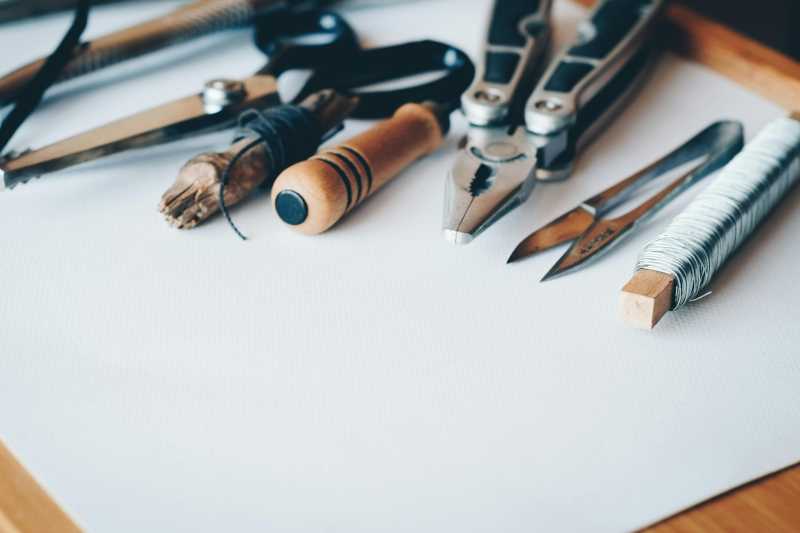Mold Remediation: DIY vs. Professional
When it comes to mold remediation, homeowners often face a critical decision: should they tackle the problem themselves or hire a professional? At Projekt Restoration, your go-to experts in water, fire, and mold restoration, we understand the complexities involved in mold removal. Mold can pose serious health risks and cause significant damage to your property if not handled correctly. While DIY mold remediation might seem like a cost-effective solution, it often lacks the thoroughness and expertise required to ensure complete removal. On the other hand, professional mold remediation services, like those offered by Projekt Restoration, provide a comprehensive approach that includes mold assessment, biohazard cleanup, and even reconstruction services if needed. In this blog, we will explore the pros and cons of DIY vs. professional mold remediation to help you make an informed decision.
Understanding Mold and Its Health Risks
Mold is a type of fungus that thrives in damp, humid environments and can pose significant health risks if not properly managed. Understanding mold and its health implications is crucial for anyone considering mold remediation, whether through DIY methods or professional services.
Mold spores are microscopic and can easily become airborne, leading to respiratory issues when inhaled. Common symptoms of mold exposure include coughing, sneezing, skin irritation, and in severe cases, asthma attacks and lung infections. According to the Centers for Disease Control and Prevention (CDC), "people with allergies, asthma, or weakened immune systems are more vulnerable to mold-related health problems."
The health risks associated with mold are not limited to respiratory issues. Prolonged exposure can lead to chronic conditions such as sinus infections and even neurological problems. The World Health Organization (WHO) has highlighted that indoor dampness and mold are linked to a variety of health issues, emphasizing the importance of effective mold remediation.
When it comes to mold remediation, understanding the severity of the infestation is key. DIY methods may be suitable for small, contained areas, but larger infestations often require professional intervention. Professionals use advanced techniques such as infrared thermal imaging to detect hidden mold and ensure thorough removal.
For those considering professional services, it’s essential to choose a reputable company. For instance, Cooper City mold removal services offer comprehensive solutions, including mold assessment and dehumidification, to ensure your home is mold-free and safe.
In summary, understanding mold and its health risks is the first step in making an informed decision about mold remediation. Whether opting for DIY methods or professional services, addressing mold issues promptly can protect your health and home.
For more information on mold remediation, visit our contact page or use our calculator to estimate remediation costs.
Identifying the Extent of Mold Infestation

Determining the extent of mold infestation is a crucial step in the mold remediation process. Whether you opt for a DIY approach or hire a professional, accurately assessing the severity of the mold problem can influence the effectiveness of the remediation efforts. Start by conducting a thorough visual inspection of your property, focusing on areas prone to moisture such as basements, bathrooms, and kitchens. Look for visible signs of mold growth, including discoloration on walls, ceilings, and floors. Additionally, pay attention to musty odors, which often indicate hidden mold.
For a more comprehensive assessment, consider using tools like moisture meters and hygrometers to measure humidity levels. High humidity can promote mold growth, so maintaining levels below 60% is advisable. In some cases, employing advanced techniques such as infrared thermal imaging can help detect moisture behind walls and ceilings, revealing hidden mold colonies.
If the infestation appears extensive or if you have health concerns, it may be wise to seek professional assistance. Experts in mold removal can perform a detailed mold assessment and develop a tailored remediation plan. They have the expertise and equipment to handle large-scale infestations safely and effectively, ensuring that all mold is eradicated and preventing future growth.
In conclusion, identifying the extent of mold infestation is a vital step that can determine the success of your remediation efforts. Whether you choose to tackle the problem yourself or hire professionals, a thorough assessment will guide you in making informed decisions and achieving a mold-free environment.
DIY Mold Remediation: Tools and Techniques
When tackling mold remediation on your own, having the right tools and techniques is crucial for effective and safe removal. Essential tools include protective gear such as gloves, goggles, and a mask to prevent inhalation of mold spores. A HEPA vacuum is indispensable for capturing microscopic mold particles, while a dehumidifier helps reduce moisture levels, preventing future mold growth. For cleaning, use a mixture of water and detergent or a commercial mold remover. Scrub brushes and sponges are useful for removing mold from surfaces, and plastic sheeting can help contain the affected area.
Techniques for DIY mold remediation start with identifying and addressing the source of moisture. Without fixing leaks or reducing humidity, mold will likely return. Begin by sealing off the contaminated area to prevent spores from spreading. Use a HEPA vacuum to clean up loose mold and debris, then scrub the affected surfaces with your cleaning solution. After cleaning, thoroughly dry the area using fans and dehumidifiers. Dispose of any contaminated materials in sealed plastic bags to avoid cross-contamination.
While DIY mold remediation can be effective for small areas, larger infestations may require professional intervention. For extensive mold issues, consider contacting experts in Cooper City mold removal or Davie mold removal. Professional services ensure thorough removal and provide peace of mind that your home is safe and mold-free. For more information or to get a quote, visit our contact page.
Pros and Cons of DIY Mold Removal
When considering mold remediation, opting for a DIY approach has its advantages and disadvantages. One of the primary benefits of DIY mold removal is cost savings. Professional mold remediation services can be expensive, and tackling the problem yourself can significantly reduce expenses. Additionally, DIY methods offer immediate action, allowing you to address the issue as soon as it is discovered, potentially preventing further damage.
However, there are notable drawbacks to DIY mold removal. One major concern is the potential health risks. Mold spores can cause respiratory issues, allergic reactions, and other health problems, especially if not handled properly. Without the appropriate protective gear and knowledge, you may expose yourself and others to these hazards. Furthermore, DIY methods may not be as thorough as professional services. Mold can infiltrate hidden areas such as behind walls or under floors, and without proper detection tools, you might miss these spots, leading to recurring issues.
Another downside is the lack of expertise. Professionals have the experience and training to identify the type of mold and the best remediation techniques. They also use specialized equipment like infrared thermal imaging to detect moisture and mold growth that is not visible to the naked eye. If you are unsure about the extent of the mold problem, it might be wise to seek a mold assessment from experts.
In conclusion, while DIY mold removal can be cost-effective and immediate, it carries significant risks and may not be as effective as professional services. For extensive mold issues, consulting with a professional service like Cooper City Mold Removal might be the safer and more reliable option.
When to Call in the Professionals

Mold remediation can be a daunting task, and knowing when to call in the professionals is crucial for ensuring the safety and health of your home. While minor mold issues can often be handled with DIY methods, there are specific situations where professional intervention is necessary. If you notice extensive mold growth covering an area larger than 10 square feet, it’s time to seek expert help. Large infestations can indicate underlying issues such as water damage or structural problems that require specialized equipment and expertise to address effectively.
Additionally, if you or anyone in your household experiences health symptoms like persistent coughing, sneezing, or skin irritation, it’s essential to contact professionals immediately. Mold exposure can exacerbate allergies and respiratory conditions, making it imperative to eliminate the source promptly and thoroughly. Professionals use advanced techniques such as infrared thermal imaging to detect hidden mold and moisture, ensuring a comprehensive remediation process.
Another critical factor is the type of mold present. Certain molds, like black mold, are highly toxic and require specialized handling to prevent further contamination and health risks. Professional mold remediation services, such as those offered by Cooper City Mold Removal, have the necessary training and protective gear to manage hazardous mold safely.
Lastly, if your mold problem stems from significant water damage, it’s advisable to consult experts who can address both issues simultaneously. Services like Weston Water Damage provide comprehensive solutions that tackle both mold and water damage, ensuring your home is restored to a safe and healthy condition.
Cost Comparison: DIY vs. Professional Mold Remediation

When it comes to mold remediation, understanding the cost implications of DIY versus professional services is crucial. DIY mold remediation might initially seem like a cost-effective solution. The expenses typically include purchasing mold removal products, protective gear, and possibly renting equipment like dehumidifiers. However, these costs can add up quickly, especially if the mold problem is extensive. Additionally, the time and effort required for a thorough job can be significant, and there’s always the risk of incomplete removal, which can lead to recurring issues and additional expenses down the line.
On the other hand, professional mold remediation services come with a higher upfront cost but offer several advantages. Professionals bring expertise, specialized equipment, and comprehensive solutions that ensure the mold is completely eradicated. They also conduct thorough mold assessments to identify hidden mold and prevent future growth. Moreover, professional services often include warranties and follow-up inspections, providing peace of mind and long-term savings. For instance, if you live in areas prone to mold issues, such as Cooper City, opting for professional mold removal can be a wise investment.
In conclusion, while DIY mold remediation might save money initially, the potential for incomplete removal and recurring problems can make professional services a more cost-effective and reliable option in the long run. For accurate cost estimation, consider using a cost calculator to compare both options based on your specific situation.
Preventing Future Mold Growth
Preventing future mold growth is a critical step in both DIY and professional mold remediation. To ensure that mold does not return, it is essential to address the underlying causes of mold growth, such as moisture and humidity. One effective method is to use dehumidifiers to maintain indoor humidity levels below 60%. Regularly inspecting and repairing leaks in roofs, windows, and pipes can also help prevent moisture buildup.
Proper ventilation is another key factor. Ensure that areas prone to moisture, such as bathrooms and kitchens, have adequate ventilation. Installing exhaust fans or opening windows can significantly reduce humidity levels. Additionally, using mold-resistant products during construction or renovation, such as mold-resistant drywall and paint, can provide an extra layer of protection.
For those who prefer professional services, companies like Projekt Restoration offer comprehensive solutions, including mold assessment and remediation. These services not only remove existing mold but also identify and address the root causes to prevent future outbreaks. Professional services often include advanced techniques such as infrared thermal imaging to detect hidden moisture sources.
Regular maintenance and prompt attention to water damage are crucial. If you experience water damage, it is advisable to seek professional help immediately to mitigate the risk of mold growth. Companies specializing in water damage restoration can provide timely and effective solutions to prevent mold from taking hold.
By taking these proactive steps, you can significantly reduce the risk of future mold growth and maintain a healthy living environment.
In conclusion, tackling mold remediation is a critical task that demands careful consideration of both DIY and professional approaches. While DIY methods can be cost-effective and suitable for minor mold issues, they come with significant risks, including potential health hazards and incomplete removal. On the other hand, professional mold remediation offers a comprehensive and safe solution, leveraging specialized equipment and expertise to ensure thorough eradication and prevention of future growth.
Ultimately, the choice between DIY and professional remediation should be guided by the extent of the mold problem, the potential health risks, and your confidence in handling the task effectively. For small, manageable mold issues, DIY might suffice, provided you follow safety guidelines meticulously. However, for extensive infestations or if you have health concerns, investing in professional services is a prudent decision that can save you time, money, and ensure a healthier living environment.
By weighing the pros and cons of each approach, you can make an informed decision that best suits your situation, ensuring that your home remains a safe and mold-free haven.





